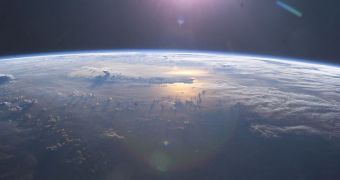Ever since the 1960s, oceanographers have proposed that the world's oceans should contain regions where vitamins are not at all present in the water. Following a new study, scientists were able to identify such locations, where B vitamins are not present even in trace amounts.
Studies such as this are important because they may shed light on the factors influencing the development of phytoplankton, the basic component of aquatic food webs. Changes in the number and quantity of available phytoplankton populations has repercussions throughout the oceans.
Finding these so-called vitamin deserts in the water is a very important discovery, made by scientists at the University of Southern California. This was made possible through the use of a newly developed analytical technique, researchers say.
After more than five decades, these long-hypothesized vitamin B deficient zones have finally been discovered, they add. “This is another twist to what limits life in the ocean,” explains USC professor of biological and Earth sciences, Sergio Sañudo-Wilhelmy.
The expert is a faculty member at the Dornsife College of Letters, Arts and Sciences, and also the lead author of a new paper detailing the findings. The work is published in the July 23 issue of the esteemed journal Proceedings of the National Academy of Sciences (PNAS).
Phytoplankton is also tremendously important because it gulps up atmospheric carbon dioxide, and then stores it at the bottom of the sea as it dies. These microscopic organisms are responsible for most of the ocean's capacity to clean up the atmosphere.
What the new study does is provide a new vantage point for analyzing these important microorganisms.
“An important result of our study is that the concentrations of the five major B vitamins vary independently and appear to have different sources and sink,” says David Karl, a coauthor on the study.
He holds an appointment with the University of Hawaii's Center for Microbial Oceanography: Research and Education (C-MORE), where he is a professor of oceanography, and also the director.
“This could lead to complex interactions among populations of microbes, from symbiosis to intense competition,” he goes on to say, quoted by EurekAlert.
The investigation was supported by the US National Science Foundation (NSF), through its Chemical Oceanography Program and Office of Integrative Activities.

 14 DAY TRIAL //
14 DAY TRIAL //